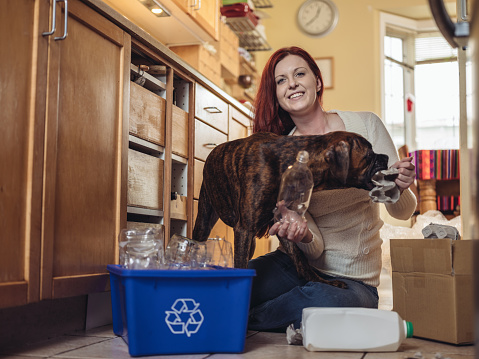If you're a pet owner or part of a community with pets you know that managing pet waste can be a challenge. Not only is it unsightly and unpleasant, but it also poses health and environmental hazards. That's where pet waste stations come in - they're designed to make pet waste management easier, cleaner, and safer for everyone. In this comprehensive guide, we'll walk you through everything you need to know about pet waste stations including what they are, how they work, and why they're so important for keeping your community clean and safe. Whether you're a homeowner property manager or community member this guide will help you understand the benefits of pet waste stations and how to choose the right one for your needs.
Importance of Pet Waste Stations: Keeping Your Community Safe
Pet waste contains harmful bacteria and parasites that can spread disease and contaminate soil and water. In addition, it's unsightly and can be a source of unpleasant odors. By providing pet waste stations you're not only keeping your community clean and hygienic but you're also promoting responsible pet ownership and keeping everyone safe.
Choosing the Right Type of Pet Waste Station for Your Community
There are various types of pet waste stations available, from basic bag dispensers to more advanced systems that automatically collect and dispose of waste. When choosing the right type of pet waste station for your community consider factors such as the number of pets in the area, the amount of foot traffic, and the available space. Look for stations that are easy to use and maintain, durable, and weather-resistant.
Setting Up and Installing Your Pet Waste Station: Tips and Best Practices
Once you've chosen the right type of pet waste station it's time to set it up and install it. Here are some tips and best practices to follow:
- Choose a location that is visible and easily accessible.
- Ensure that the station is installed securely and won't tip over or blow away in strong winds.
- Make sure that the station is stocked with bags and that there's a nearby trash can for disposal.
- Provide clear signage to indicate the purpose of the station and how to use it.
- Regularly inspect and maintain the station to ensure that it's in good working condition.
How to Properly Use a Pet Waste Station A Step-by-Step Guide
Using a pet waste station is simple, but it's important to do it correctly to ensure that it's effective. Here's a step-by-step guide:
- Grab a bag from the dispenser.
- Place your hand inside the bag and pick up the waste.
- Turn the bag inside out and tie it securely.
- Dispose of the bag in the nearby trash.
- Remember to always wash your hands thoroughly after handling pet waste.
How Often Should You Empty and Maintain Your Pet Waste Station?
Pet waste stations should be emptied and maintained regularly to ensure that they remain effective. The frequency of maintenance depends on factors such as the number of pets in the area and the amount of foot traffic. As a general rule, pet waste stations should be emptied and cleaned at least once a week.

Addressing Common Concerns and Objections to Pet Waste Stations
Some people may have concerns or objections to pet waste stations. For example, they may worry that the stations will be unsightly or that they'll attract more pets to the area. It's important to address these concerns and provide clear information about the benefits of pet waste stations. Explain that pet waste stations promote responsible pet ownership, keep the community clean and safe, and are easy to use and maintain.
Training Pet Owners to Use Pet Waste Stations: Tips and Strategies
While pet waste stations are easy to use, not everyone may be aware of them or know how to use them correctly. Here are some tips and strategies for training pet owners to use pet waste stations:

- Provide clear signage that indicates the purpose of the station and how to use it.
- Educate pet owners about the importance of cleaning up after their pets and the potential health hazards of pet waste.
- Host community events or workshops to promote responsible pet ownership and demonstrate how to use pet waste stations.
- Offer incentives such as free bags or treats for using the pet waste stations.
- Consider partnering with local pet stores or veterinary clinics to spread the word about pet waste stations and responsible pet ownership.
Benefits of Pet Waste Stations: Beyond Just Keeping Your Community Clean
Pet waste stations not only keep your community clean and safe, but they also offer other benefits. Here are some examples:
- Promote responsible pet ownership: By providing pet waste stations, you're encouraging pet owners to be responsible and considerate of their surroundings.
- Enhance community appearance: Clean and well-maintained communities are more attractive to residents and visitors alike.
- Protect the environment: Pet waste contains harmful bacteria and parasites that can contaminate soil and water By properly disposing of pet waste you're helping to protect the environment.
- Reduce odors and pests: Pet waste can attract pests such as flies and rodents, and can also produce unpleasant odors. By providing pet waste stations, you're reducing the likelihood of these issues.
Conclusion
In conclusion, pet waste stations are an essential tool for keeping your community clean and safe. By choosing the right type of station, setting it up correctly, educating pet owners, and maintaining it regularly, you'll be promoting responsible pet ownership and enhancing the appearance and health of your community.
Frequently Asked Questions (FAQ)
A: Yes, some cities and towns have ordinances or regulations related to pet waste stations, including requirements for installation and maintenance. It is important to check with your local authorities to ensure compliance.
A: You can convince your community to install pet waste stations by educating them about the benefits of responsible pet ownership and the potential health risks associated with dog waste. You can also gather support from local pet owners and advocate for the installation of stations at community meetings or through petitions.
A: Pet waste stations can be environmentally friendly if they are designed to use biodegradable bags and are emptied and disposed of properly.



